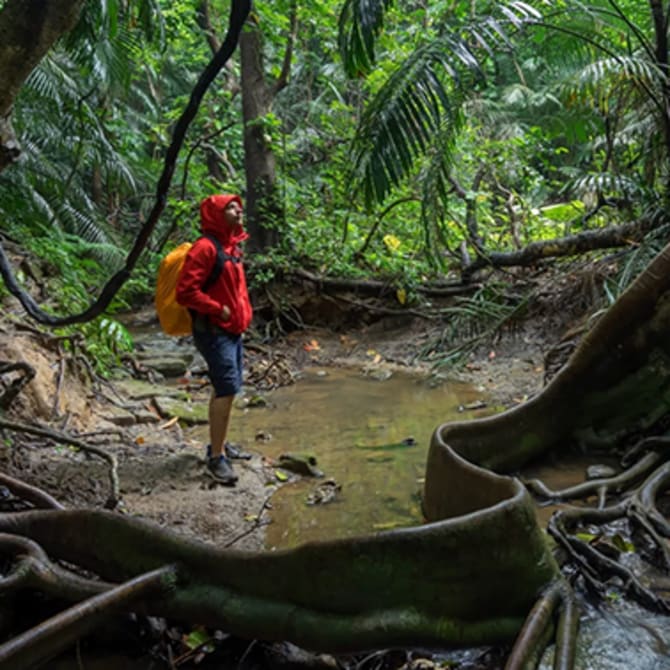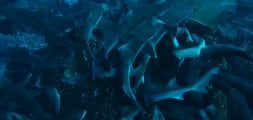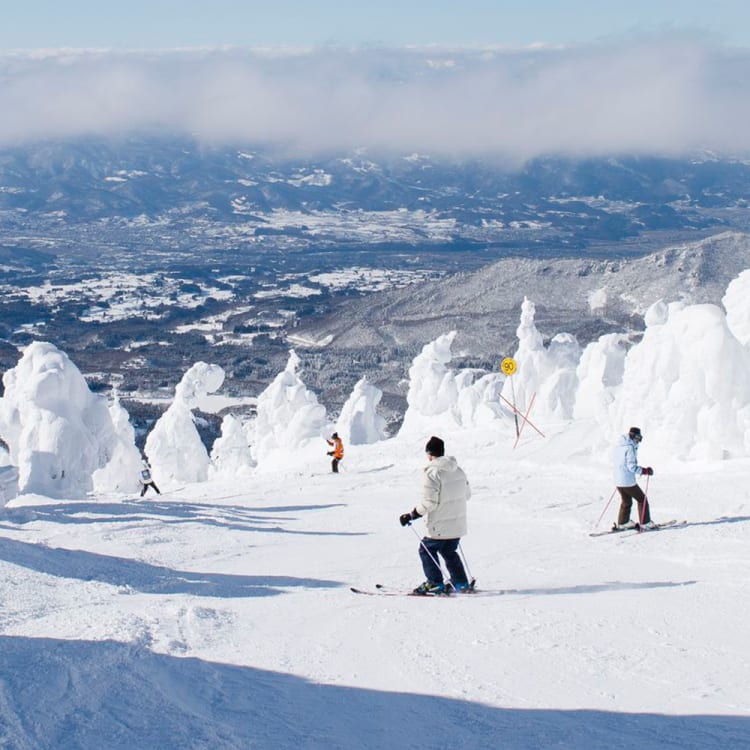
TOP RECOMMENDATIONS Zao Onsen
Where the snow monsters dwell — a top class hot spring resort in Japan's north-east
Zao Onsen is a historic hot spring area and one of the largest hot spring and ski resorts in the Tohoku region. The Zao Onsen ski resort is set over a vast area with 38 ski lifts, including three cable cars, that together serve 14 ski slopes and 12 ski courses. With phenomenal snow quality and an extremely varied selection of runs, everyone from beginners to advanced-level snow travelers can have fun here. The snow monsters — or Juhyo — that Zao is famous for spread out near the top of the slope and you can reach them by taking two connecting cable cars from the foot of the mountain. Enjoy winding through the Juhyo on skis or a snowboard for a particularly memorable Zao Onsen experience. You don't have to ski to enjoy the snow monsters, though, as the cable car runs back down the mountain.

How to get there
By train
From Tokyo Station, take the Yamagata Shinkansen to Yamagata Station — the journey takes around 2 hours 30 minutes. Transfer to a bus for the 40-minute ride to Zao Onsen Bus Terminal. The Zao Central Ropeway is a four-minute walk from the terminal.
By car
From Tokyo Station, take the Yamagata Shinkansen to Yamagata Station — the journey takes around 2 hours 30 minutes. Transfer to a bus for the 40-minute ride to Zao Onsen Bus Terminal. The Zao Central Ropeway is a four-minute walk from the terminal.
By plane
From Sendai Airport, take the express bus to Zao Onsen (reservations required). The journey from the airport takes around 1 hour 50 minutes.
A hot spring resort dating back 1,900 years
Zao's hot springs were first discovered 1,900 years ago and were given the moniker “springs of beauty” as bathing in them led to health benefits including improved blood circulation, anti-microbial properties, and a rejuvenating effect on skin and blood vessels. As visitors began coming to the town after hearing about the beneficial properties of its waters, the surrounding town steadily began to grow. The first locally managed ski lift began operating in 1950, and further development, including cable cars and roads, followed. Today, the area has grown to become one of the largest integrated mountain resorts in the Tohoku region. You don’t have to stay at one of the hot spring hotels to experience the benefits of the water. The town's hot spring district includes a further three public baths, three foot baths and five hot spring resorts that are open to the public.

A mountain inhabited by snow monsters
Zao Onsen ski resort is known for a particularly icy spectacle. Frost and snow-covered trees turn into snow monsters during the winter season and visitors can witness this eerie sight stretching out from just below the summit of Mt. Jizo. Snow monsters are a very rare phenomenon worldwide and only occur in certain mountainous areas of Japan. The monsters take shape because of geographical factors unique to the Zao area. Harsh, seasonal winds blow through the area covering the fir trees in droplets of water that freeze onto the leaves and branches. This ice gets covered in snow, and as this process is repeated, the mysterious icy shapes begin to form.

Snow monster illumination and snowcat tours
To reach the ski slope where the snow monsters dwell, you need to take the two connecting Zao Ropeway lines to the top of the mountain. The ropeway makes scaling the mountain very easy, even if you're not planning to ski or snowboard down. The snow monsters are lit up from late December to late February (the exact period may vary depending on the condition of the trees) meaning when night falls, you can witness the monsters appearing from the darkness from both the ropeway and from the observation deck of the mountain-top station. During the snow monster illumination season, you can take in the other-worldly sights on one of the snowcat "Night cruiser" tours.
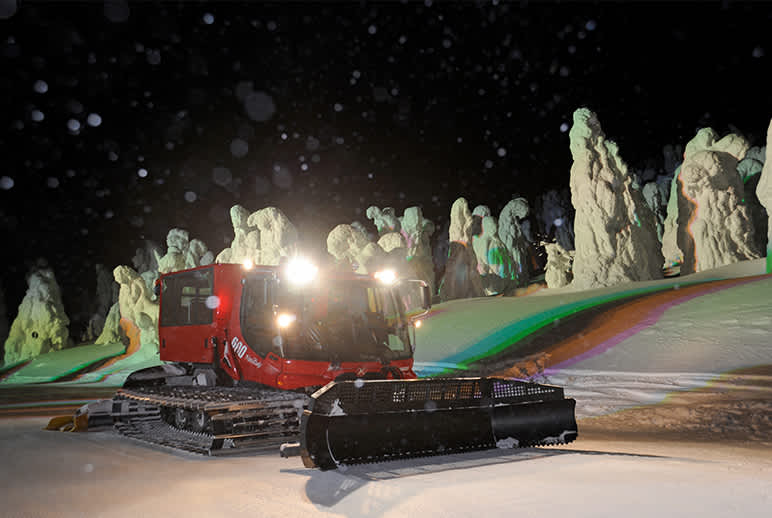
A taste of Hokkaido in Zao Onsen
Jingiskahn — or Genghis Khan — is a lamb-based dish cooked in an iron pot and synonymous with Japan's northern island of Hokkaido. However, the dish is thought to have originated in Zao Onsen, specifically in an eatery named Genghis Khan Shiro. These days you can eat Genghis Khan at Robata, a short two-minute walk from the Zao Onsen bus stop. Lamb meat is low in cholesterol and rich in iron and B vitamins, making it a very healthy meal.
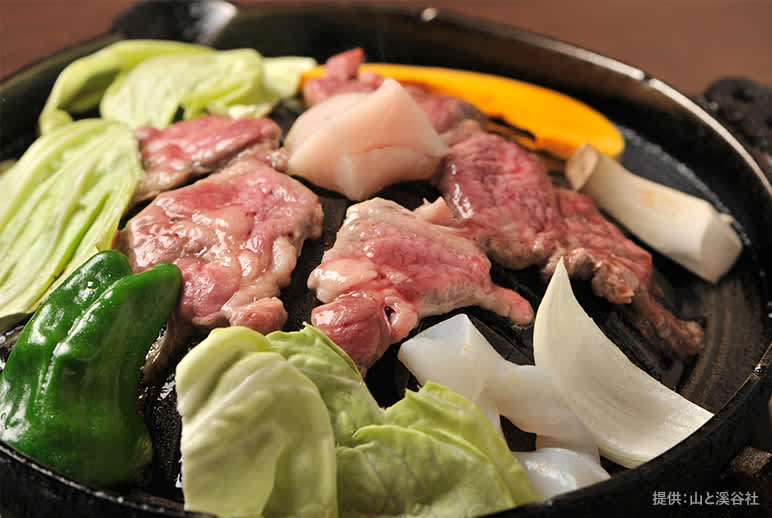
Find Hotels





















































